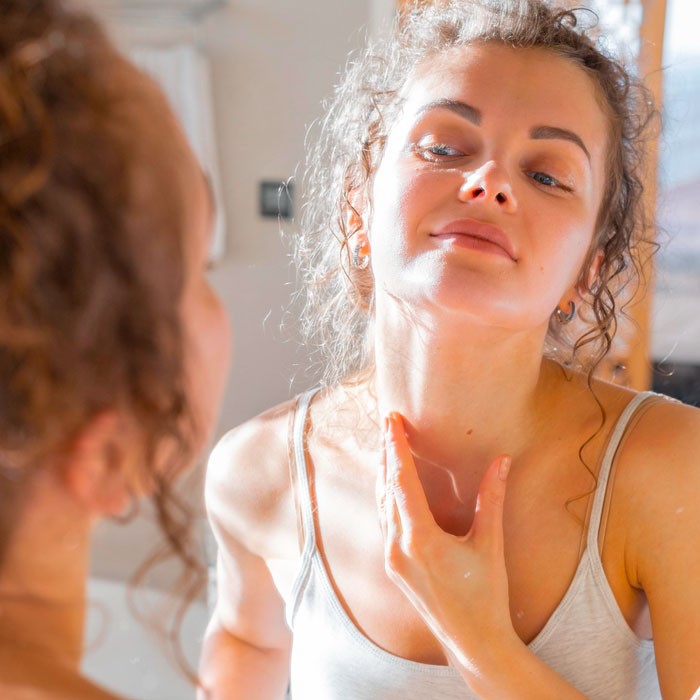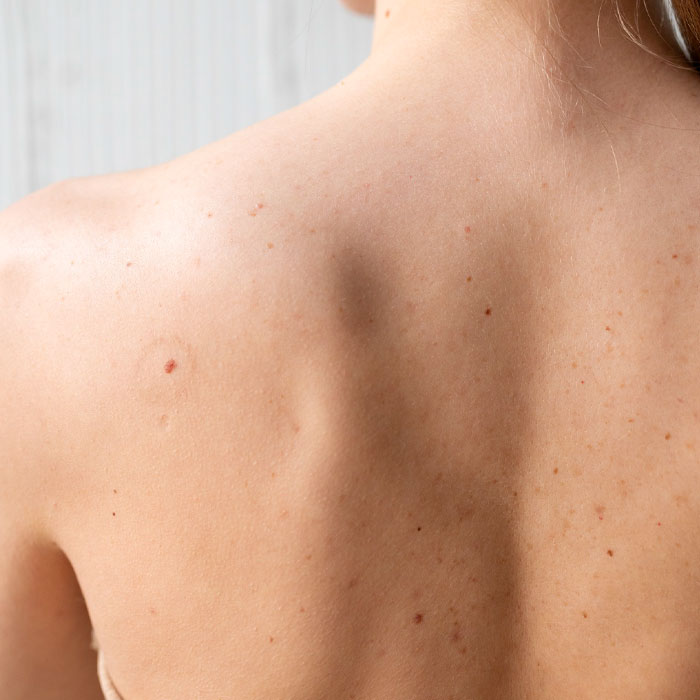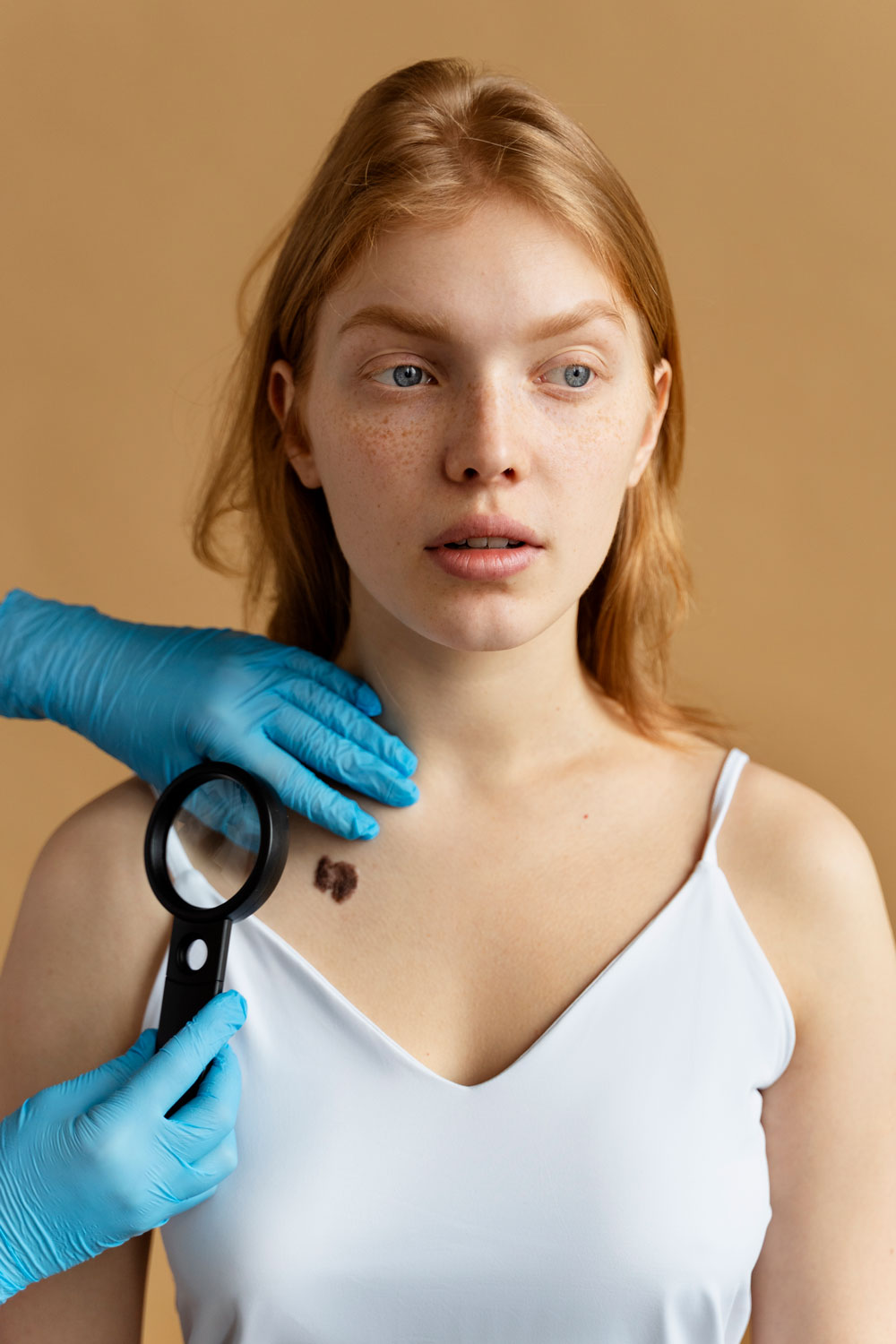40 Einstein St., Ramat Aviv Mall Tower, 3rd floor, Tel Aviv
40 Einstein St., Ramat Aviv Mall Tower, 3rd floor, Tel Aviv
דף הבית » Monitoring High-Risk Patients for Skin Cancer
Skin cancer is the most prevalent form of cancer in humans. Early detection play a crucial role in achieving successful treatment outcomes. High-risk patients, including those with a personal or family history of skin cancer, multiple moles, fair skin, a history of excessive sun exposure, or a weakened immune system, can greatly benefit from periodic skin exams. This article explores the importance of skin cancer screening for high-risk patients and the recommended screening methods.


Individuals with the aforementioned characteristics face a significantly heightened risk of developing skin cancer. Periodic examinations aid in the early identification of suspicious skin lesions, enabling timely intervention and improved outcomes. Early diagnosis and treatment reduce the likelihood of cancer spreading and enhance the chances of successful treatment and cure.
Self-examination: High-risk patients should regularly conduct self-examinations of their skin. It is recommended to examine the entire body, including often neglected areas like the scalp, feet, and genital area. Individuals at high risk should remain vigilant for changes in moles, new growths, or suspicious lesions. Any abnormal findings should be promptly reported to a dermatologist.
Periodic skin examinations by a dermatologist: High-risk patients should undergo periodic skin examinations conducted by a dermatologist. These professionals possess the expertise to identify early signs of skin cancer that may be missed during self-exams. During a professional skin examination, the entire body is scrutinized for suspicious lesions, and any concerning findings warrant further evaluation or a biopsy if necessary.
Dermoscopy: Dermoscopy is a non-invasive imaging technique that aids in the examination of skin lesions. This test utilizes a special magnification tool called a dermatoscope to examine the skin’s surface and structures within the skin layers. Dermoscopy enables dermatologists to assess suspicious lesions more accurately and differentiate between benign and malignant tumors, proving particularly valuable for high-risk patients with numerous moles or atypical lesions.
Total-body photography: Total-body photography involves capturing high-resolution photos of the entire skin surface. These images serve as a reference point for future comparisons and help identify subtle changes over time. Some systems utilize artificial intelligence technology to detect such changes. Total body photography is especially beneficial for high-risk patients with multiple moles or a history of multiple skin cancers.
Genetic testing: In certain cases, high-risk individuals with a strong family history of skin cancer may be advised to undergo genetic testing. Genetic testing can identify specific gene mutations associated with an increased risk of developing skin cancer. This information assists in guiding screening protocols and informs targeted interventions or preventive measures.


Skin cancer screening is vital for high-risk patients as it enables early detection of suspicious skin lesions and timely intervention. Regular self-examinations, periodic skin examinations by a dermatologist including dermoscopy, total-body photography, and genetic testing are screening methods for high-risk individuals. By remaining vigilant about their skin health, high-risk patients can enhance the likelihood of early detection, prompt treatment, and improved outcomes. Working closely with a dermatologist allows high-risk individuals to establish a personalized screening program that addresses their specific risk factors while promoting early detection and prevention strategies.
If you have located a suspicious lesion on the skin, especially if it is unusual, new or recently changed, contact a dermatologist as soon as possible in order to diagnose the lesion and decide on further treatment.
Give us a call or fill in your details and we will get back to you